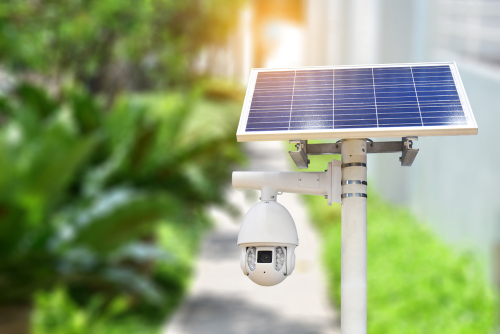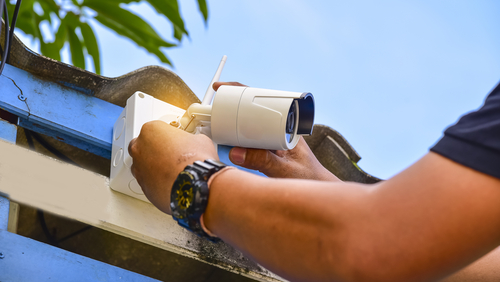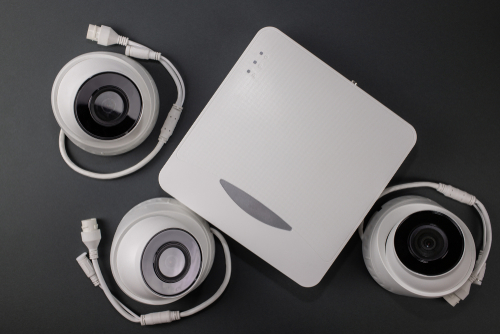
CCTV in Art Galleries: Protecting Cultural Treasures
November 17, 2023
Outdoor vs Indoor IP Cameras: What’s the Difference?
January 4, 2024Tips for Installing IP Cameras at Your Business Premises
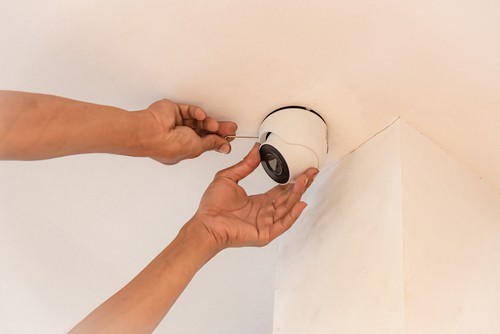
Tips for Installing IP Cameras at Your Business Premises
Tips for Installing IP Cameras at Your Business Premises. Security is a fundamental concern for businesses, regardless of size or industry.
Protecting your assets, employees, and customers is a matter of responsibility and crucial to maintaining a successful business.
In today’s technologically advanced world, IP cameras have become a powerful tool for enhancing security.
This comprehensive guide will provide detailed insights on installing IP cameras at your business premises, ensuring your security needs are effectively met.
This article aims to empower you with the knowledge and guidance to make informed decisions about installing IP cameras.
Whether you are considering enhancing your existing security infrastructure or implementing a completely new system, this guide will assist you in making the right choices.
Choosing the Right Camera Types
Dome Cameras
Dome cameras are a versatile choice suitable for both indoor and outdoor use. Their discreet design and wide-angle coverage make them an excellent option for various settings.
Bullet Cameras
Bullet cameras are designed for long-range surveillance, making them ideal for monitoring large outdoor areas, such as parking lots or entry points.
PTZ Cameras
Pan-tilt-zoom (PTZ) cameras offer remote control over the camera’s orientation and zoom, allowing for real-time adjustments. They are an excellent choice for businesses requiring flexible surveillance options.
Specialty Cameras
1. License Plate Recognition
Specialty cameras, like License Plate Recognition (LPR) cameras, are crucial for businesses that need to identify and track vehicles entering their premises accurately.
2. 360-Degree Cameras
360-degree cameras provide panoramic views and are suitable for monitoring large areas with a single camera.
Camera Placement
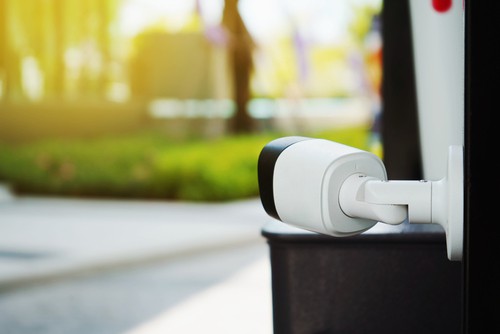
Optimal Camera Angles
Choosing the right camera angles is essential for effective monitoring. Proper placement ensures that cameras cover all critical areas, leaving no room for blind spots.
Coverage Overlaps
To minimize gaps in surveillance, cameras should be placed strategically so that their coverage overlaps, ensuring continuous monitoring of your business premises.
Hiding Cameras vs. Visible Deterrence
The decision to hide cameras discreetly or make them visibly evident depends on your security strategy. Visible cameras can act as a deterrent, while hidden cameras provide a more inconspicuous approach.
Network Infrastructure
Evaluating Your Network Capacity
Before installation, it’s crucial to assess your network’s capacity. Adding IP cameras should not cause network congestion or performance issues. A network assessment will help ensure smooth integration.
Wired vs. Wireless Cameras
Choosing between wired and wireless cameras should be based on your specific requirements. Consider factors like reliability, flexibility, and existing infrastructure when making this decision.
PoE (Power over Ethernet) Considerations
Power over Ethernet (PoE) simplifies camera installation by providing both power and data through a single cable. This reduces the need for additional wiring and streamlines the installation process.
Selecting the Right Storage Solution
Onboard Storage vs. Cloud Storage
When it comes to storage, you’ll need to decide between onboard and cloud storage. The choice depends on your storage capacity needs and your preference for data accessibility.
Storage Capacity Requirements
Assessing the amount of storage required is essential. Factors such as camera resolution and recording duration will impact your storage needs.
Calculating this in advance ensures that you have enough storage to meet your requirements.
Backup Solutions
Having backup solutions is crucial to safeguard your recorded footage in case of system failures or data loss. Regularly back up your data to ensure its safety.
Installation Process
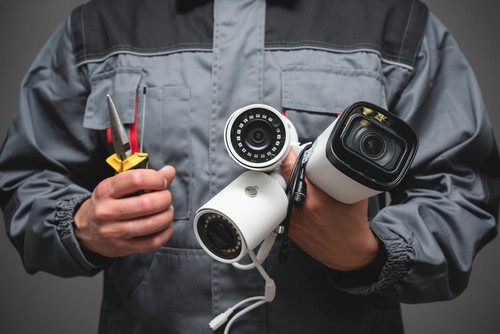
DIY vs. Professional Installation
The installation process can be done either as a do-it-yourself (DIY) project or by hiring professional installers.
Your choice will depend on your technical expertise and the complexity of the installation.
Positioning the Cameras
Precise positioning of the cameras is critical for effective monitoring. Ensure each camera is directed at the most relevant areas to capture high-quality footage.
Wiring and Cable Management
Proper cable management is essential for a clean and organized installation.
It prevents damage to cables and reduces the risk of interference that could disrupt camera function.
Camera Calibration and Testing
After installation, calibrating the cameras is crucial to optimize image quality. Thorough testing should be conducted to ensure that the cameras function as intended.
Network Configuration
Assigning IP Addresses
Properly assigning IP addresses to each camera is crucial for efficient network management and remote access.
Each camera must have a unique IP address to be easily identifiable on your network.
Port Forwarding for Remote Access
You must set up port forwarding on your network router to enable remote camera access. This process allows you to access camera feeds remotely through secure connections.
Network Security Measures
Implementing robust security measures is essential to protect your camera system from unauthorized access and potential cyber threats. Ensuring your network is secure is paramount.
Power Supply and Backup
Ensuring Reliable Power Sources
Ensuring reliable power sources is vital to prevent camera downtime.
In the event of power outages, having backup power options, such as Uninterruptible Power Supply (UPS) systems, is crucial for uninterrupted surveillance.
UPS (Uninterruptible Power Supply) for Continuity
Investing in UPS systems ensures continuity of camera operation during power outages.
This is especially important for businesses that cannot afford any downtime in surveillance.
Image and Video Settings
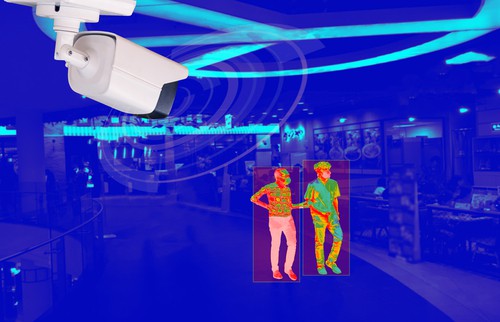
Adjusting Camera Resolution
Optimizing camera resolution settings is essential to balance image quality with storage capacity. Higher resolution provides clearer images but requires more storage.
Frame Rates and Compression
Adjusting frame rates and compression settings is critical for meeting your recording and storage requirements.
Finding the right balance ensures you maintain image quality while conserving storage space.
Motion Detection Settings
Implementing motion detection settings can help reduce unnecessary recording.
This feature alerts you to any motion in the camera’s field of view, ensuring you are notified of potential security breaches.
Remote Access and Mobile Viewing
Setting Up Mobile Apps
Configuring mobile apps for remote camera access is essential for real-time monitoring from anywhere.
Mobile apps provide the flexibility to monitor your business premises when you are not physically present.
Remote Monitoring
Setting up secure remote monitoring is crucial. It allows you to access camera feeds remotely, ensuring you can monitor your business premises even when you’re away.
User Permissions and Security
Implementing user permissions is vital for controlling access to camera feeds and ensuring data security.
Be selective about who can access your camera system to maintain its integrity.
Maintaining Your IP Camera System
Regular Checks and Inspections
Regular checks and inspections are vital to identify and resolve issues promptly.
Consistent monitoring of your system ensures that it functions correctly and provides uninterrupted surveillance.
Firmware Updates
Keeping your camera firmware up-to-date is crucial. Firmware updates often include security enhancements and improved functionality, making your camera system more reliable.
Cleaning and Maintenance Tips
Maintenance of your cameras is essential to preserve image quality and extend the lifespan of your IP cameras.
Regular cleaning of camera lenses and housings is necessary to ensure the continued clarity of your footage.
Troubleshooting Common Issues
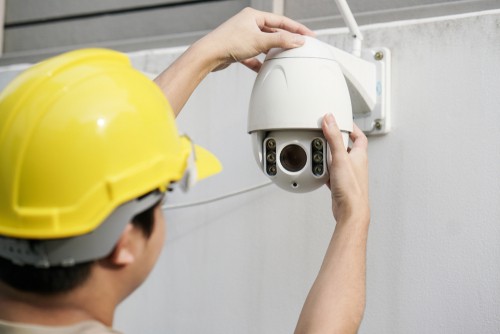
Connectivity Problems
Addressing connectivity problems, such as network disruptions or cameras going offline, is essential to maintain uninterrupted surveillance. Timely troubleshooting can help resolve these issues.
Image Quality Issues
Troubleshooting image quality problems, such as blurry or pixelated footage, ensures that your cameras continue to provide accurate and high-quality monitoring.
Storage and Recording Problems
Resolving storage and recording issues, including insufficient storage space and corrupted footage, is essential to maintain the effectiveness of your camera system.
Training and User Education
Training your employees on using the camera system is essential for its effective utilization. Ensure that they can confidently access and use the system to contribute to your business’s overall security.
Educating your staff on how to respond to security incidents is vital.
Knowing how to react in various situations, from minor issues to major security breaches, can make a significant difference in safeguarding your business.
Frequently Asked Questions (FAQs)
Do I need a professional installer for IP cameras?
The choice between a professional installer and a do-it-yourself approach depends on your technical expertise and the complexity of the installation.
While professionals can ensure a reliable setup, individuals with technical knowledge may undertake the installation themselves.
What are the common mistakes to avoid during installation?
Common mistakes during installation include improper camera placement, neglecting legal compliance, and overlooking network security.
Following this comprehensive guide can help you avoid these pitfalls.
How secure are IP cameras against hacking?
IP cameras can be vulnerable to hacking if not adequately secured.
Implementing robust security measures and regularly updating firmware is essential to mitigate the risk of hacking and protect your camera system.
Can I upgrade my existing analog camera system to IP?
Yes, upgrading an existing analog camera system to IP is possible. However, this transition may require rewiring and new equipment.
Before making the switch, consider the cost and benefits to determine whether an upgrade is right for your business.
What are the maintenance tasks I should perform regularly?
Regular maintenance tasks include cleaning camera lenses, checking connections, and updating firmware to ensure optimal camera performance and maintain the integrity of your surveillance system.
Tips for Installing IP Cameras at Your Business Premises – Conclusion

Proper installation of IP cameras is a critical step in enhancing the security of your business premises.
It offers peace of mind, deters potential threats, and contributes to your business’s safety and success.
Following this article’s guidance, you’ll be well-prepared to make informed decisions and successfully install IP cameras at your business premises.
Are you seeking professional and reliable CCTV installation services in Singapore? Contact us today!

